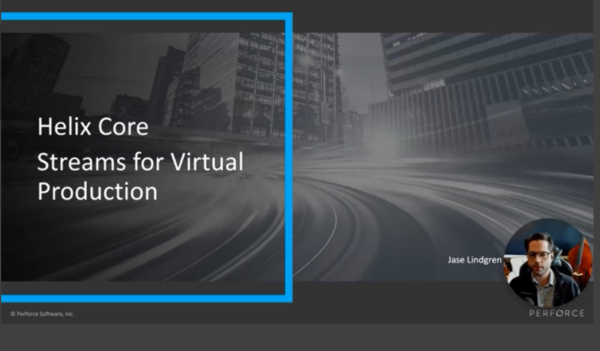
Perforce Explores Version Control Workflows For Virtual Production
During the March 29 “Tech Talk” webinar “Version Control Workflows for Virtual Production,” Jase Lindgren, visual effects specialist and solutions engineer at Perforce Software, touted the benefits of version control when it comes to virtual productions.
“My background is in visual effects for several years, both as an artist and as a pipeline engineer,” he told viewers, noting he’s been with Perforce for a couple years, “helping visual effects studios from the other side with their version control.”
He first explained what version control is exactly but told viewers: “I’m not going to go super in depth in that because this is a tech talk, so I’m, it’s expecting a little bit of an understanding of what we’re doing and this is more about how you actually implement that and use that.”
So, “what is version control?” he asked rhetorically, explaining: “First, let’s look at a world without version control. And this is the way that the film industry has historically worked for a long time and still works this way for the most part. And that is we have this user over here on the left, she’s got a project and in it … there’s a bunch of files that are referenced in her project. But let’s say one of them is file A. And the way we do versioning traditionally is just by making new files and then renaming them. So we have this file …. and then if that file gets updated by this other user, there’s now” another version of that file. As a human being, the user is “having to manually keep track of that,” he noted.
 “You can see how this involves keeping track of a lot of communication between people,” he noted, adding “this was just an example with a single file being referenced, whereas, in reality, as we all know, you’ve got tons of different files.”
“You can see how this involves keeping track of a lot of communication between people,” he noted, adding “this was just an example with a single file being referenced, whereas, in reality, as we all know, you’ve got tons of different files.”
On a project “where you’ve got potentially hundreds and thousands of files that all make up this one project, to manually update those just” would not be practical, he pointed out.
“That’s one of the big reasons why, the digital effects companies that are doing virtual production are coming to Helix Core – because they’re realizing” their way of doing it just doesn’t scale very well – “because it relies on humans doing a lot of extra work.”
With version control, however, “the way this works is that Helix Core has a centralized server where all of these files are stored,” he explained. “So when someone makes a change to a file, they submit it to the server and then another user is able to sync those files down their machine and then they’ll get that latest version. And so you can see here we just have file A and file B.”
As a result, he said: “Not only can I get the latest [version] more easily by just getting sync and now all those files on my computer have updated to the later versions, but their file names haven’t changed.”
Also, he went on, “within version control, we also have this concept of streams,” which is a key part of the process.
